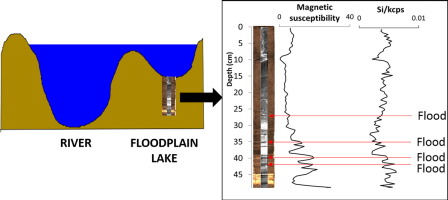What were rivers like in the past?

Floodplain lakes of the Yarra River became increasingly disconnected from the main river over the course of the 19th and 20th centuries. This discovery was highlighted in a new study published in Science of The Total Environment by Anna Lintern and fellow researchers.
In their recent work Anna Lintern and her colleagues developed a framework that can be used to understand the historical hydrology of rivers and applied it to the Yarra River in Melbourne, Australia. Using sediment cores taken from floodplain lakes of the Yarra River, the researchers found that the floodplain lakes of the Yarra River became increasingly disconnected from the main river over the course of the 19th and 20th centuries (i.e., after European arrival and settlement in Australia). “This was likely due to river regulation, land use intensification and urbanization” said the authors.
According to the authors many river systems are experiencing significant hydrological shifts due to climate change and anthropogenic activities. When managing river hydrology for the protection of the ecosystem, and for securing water supplies for human use, it is important to understand how river hydrology has changed historically. This can reveal the key factors contributing to hydrologic change in the river system over time. It can also “unearth the natural hydrology of the river”, according to the authors. “These pieces of information are critical when designing mitigation strategies.“
The presented framework also enables the identification of individual flood layers in the sediment cores. The dates of these layers can be calculated to identify historical flood frequencies. The decreasing flow rates and flooding frequencies of the Yarra River in the past 200 years, as identified from the sediment cores were validated using measured flow data and a historical record of flood events.
The authors of the study believe that the methodology presented in the paper could be applied to identify the historical hydrology of other river systems. This understanding would help policy makers make an informed decision about the hydrological regimes that should be implemented in water-stressed river systems, and the strategies that should be used to restore these systems to healthier states.
‘Sediment cores as archives of historical changes in floodplain lake hydrology’, Science of The Total Environment, doi:10.1016/j.scitotenv.2015.11.153
